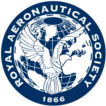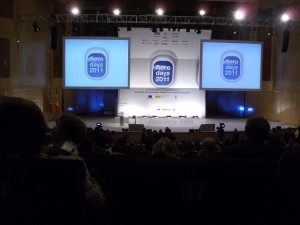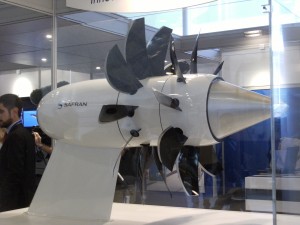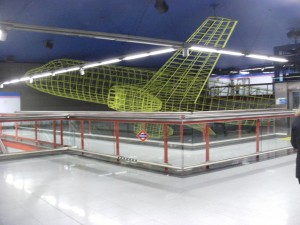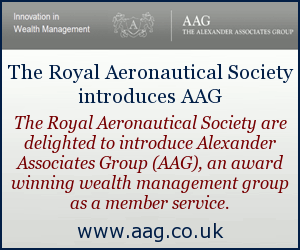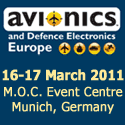Bill Read reports from Madrid on the European Commission’s Aerodays conference - highlighting the latest aeronautical research and development.
This week sees the sixth meeting of Aerodays in Madrid from 30 March to 1 April. Organised by the European Commission the three-day convention presents an progress update on the latest aeronautics and air transport research in the EU’s Seventh Framework Programme. Last held in Vienna in 2006 with 900 participants, this year’s event brings together over 1,500 policy makers, aerospace manufacturers, engineers, researchers and customers to report and discuss the challenges and solutions for creating greener, safer, secure and competitive solutions for aerospace and air transport in Europe. A full report of the event will be published in the June edition of Aerospace International.
The opening session saw keynote speeches from Cristina Garmendia, Spanish minister for science and innovation, Siim Kallas, vice president of the European Commission and Commissioner for Transport. Rudolph Strohmeier, minister of economy, regional government of Madrid, Ines Ayala from the European Parliament, Antonio Vazquezm president of the newly created International Airlines Group (IAG) which runs British Airways and Iberia, Tom Enders, president and ceo of Airbus, Johann-Dietrich Worner, chairman of the German research institute DLR and Guiseppe Orsi, ceo of AgustaWestland.
The highlight of the first day was the formal launch of FlightPath 2050, Europe’s Vision for Aviation. A follow-on from the ACARE 2020 report first launched ten years ago, the new report looks ahead at how the challenges and goals that European aviation might and should face 40 years into the future. Prepared in co-operation with key stakeholders in the European aviation industry, including airports, air traffic controllers, airlines, manufacturers, energy providers and researchers, FlightPath 2050 looks at the needs of both air transport users and suppliers, as well as the environment. The report envisions a world in which piloted aircraft and UAVs operate in the same airspace, the development of sufficient quantities of biofuels to replace fossil fuels, new quieter more efficient aircraft and multimodal transport hubs where fixed wing and rotorcraft air transport connects seamlessly with high-speed land-based systems. FlightPath 2050 also includes some tough targets to achieve: reducing aircraft CO2 emissions by 75% and NOx by 90%, reducing noise levels by 65%, emission-free aircraft taxiing, the development of sustainable alternative fuels, reducing accidents by 80%, non-intrusive and swift security checks for passengers, improving air traffic management systems to enable an increase in the number of commercial flights from its current annual total of 9.4m in 2011 to 25m in 2050 while still protecting the environment and maintaining Europe’s global competiveness against overseas competition.
Following the keynote speeches, the conference divided into eight parallel sessions covering the latest European aeronautical research. This included such subjects as making airports and aircraft safer and more enjoyable for passengers, engine and structures technology, novel manufacturing techniques, air transport and the environment and research support. Highlights included presentations of a behavioural study of security in airports and the CASAM project protecting civil aircraft against man portable missile launchers, as well as an Airbus military project on structural health monitoring.
The event is also hosting a Young Scientist Competition in which students are invited to present 40 selected projects in a series of sessions to compete for an Aerodays 2011 Student Awards. The winners will be announced on Friday.
During the conference Aerodays is also organising two international transfer technology sessions designed to allow an exchange of information between potential technology partners.
The first day also saw an announcement from Airbus that it had signed an agreement with Iberia to develop a bio-fuel production chain for the Spanish aviation industry.
And finally
An example of a multi-modal transport hub of the future? The entrance hall of Colombia Station on the Madrid Metro featured this large-scale model of a two-engined passenger jet. Of course, the reason could be because the station has a line where passengers can catch trains to Madrid Airport.
